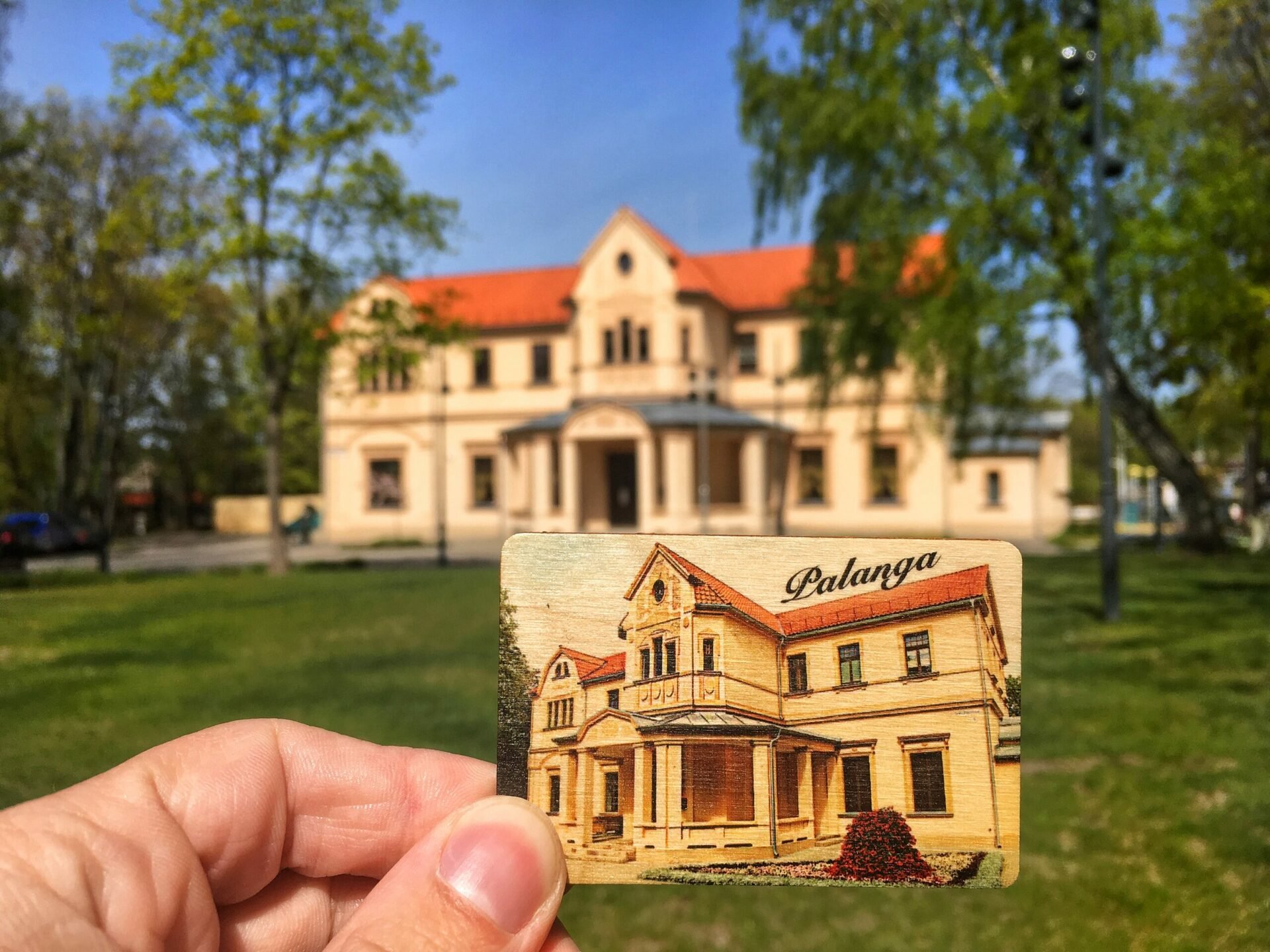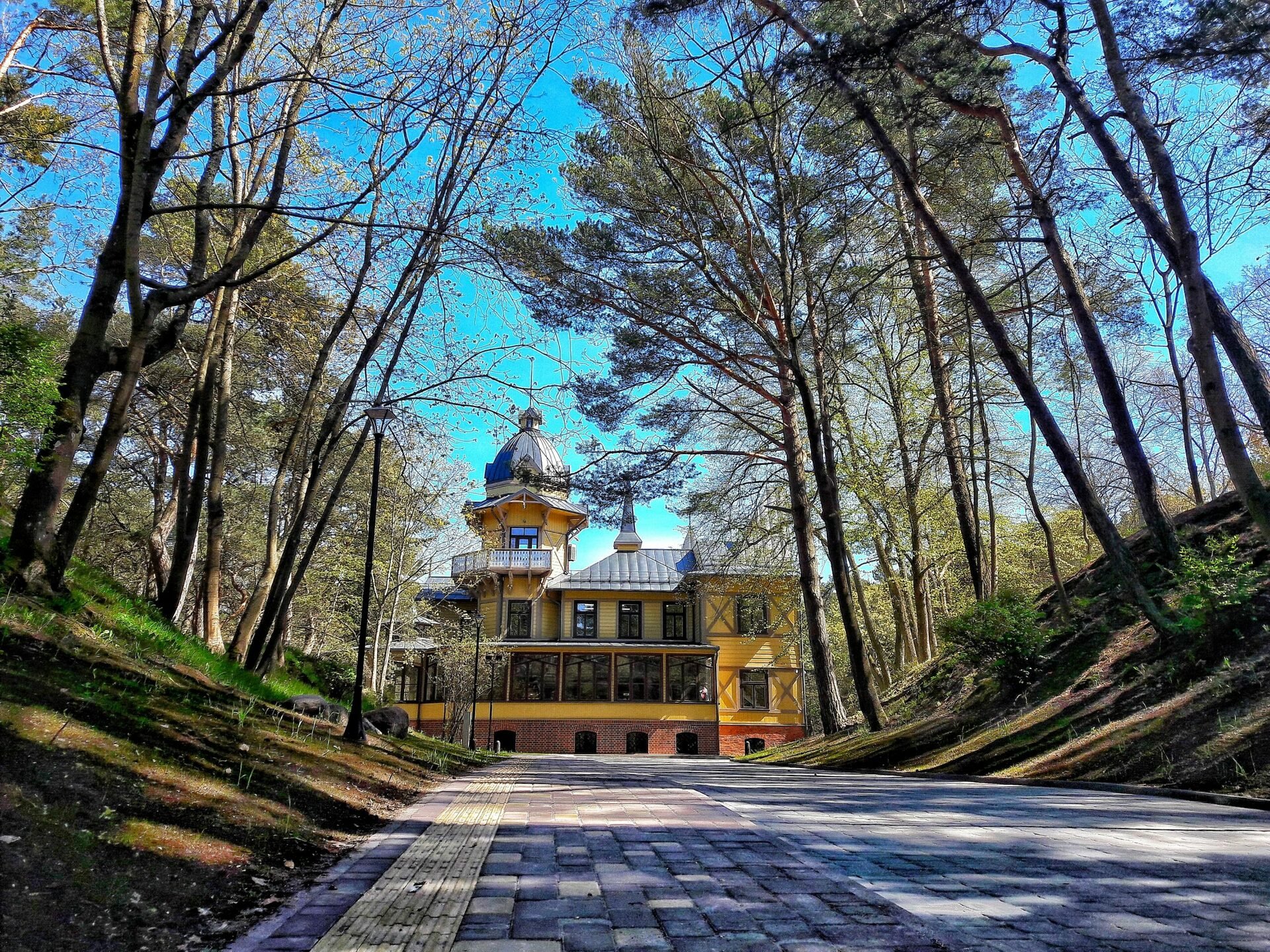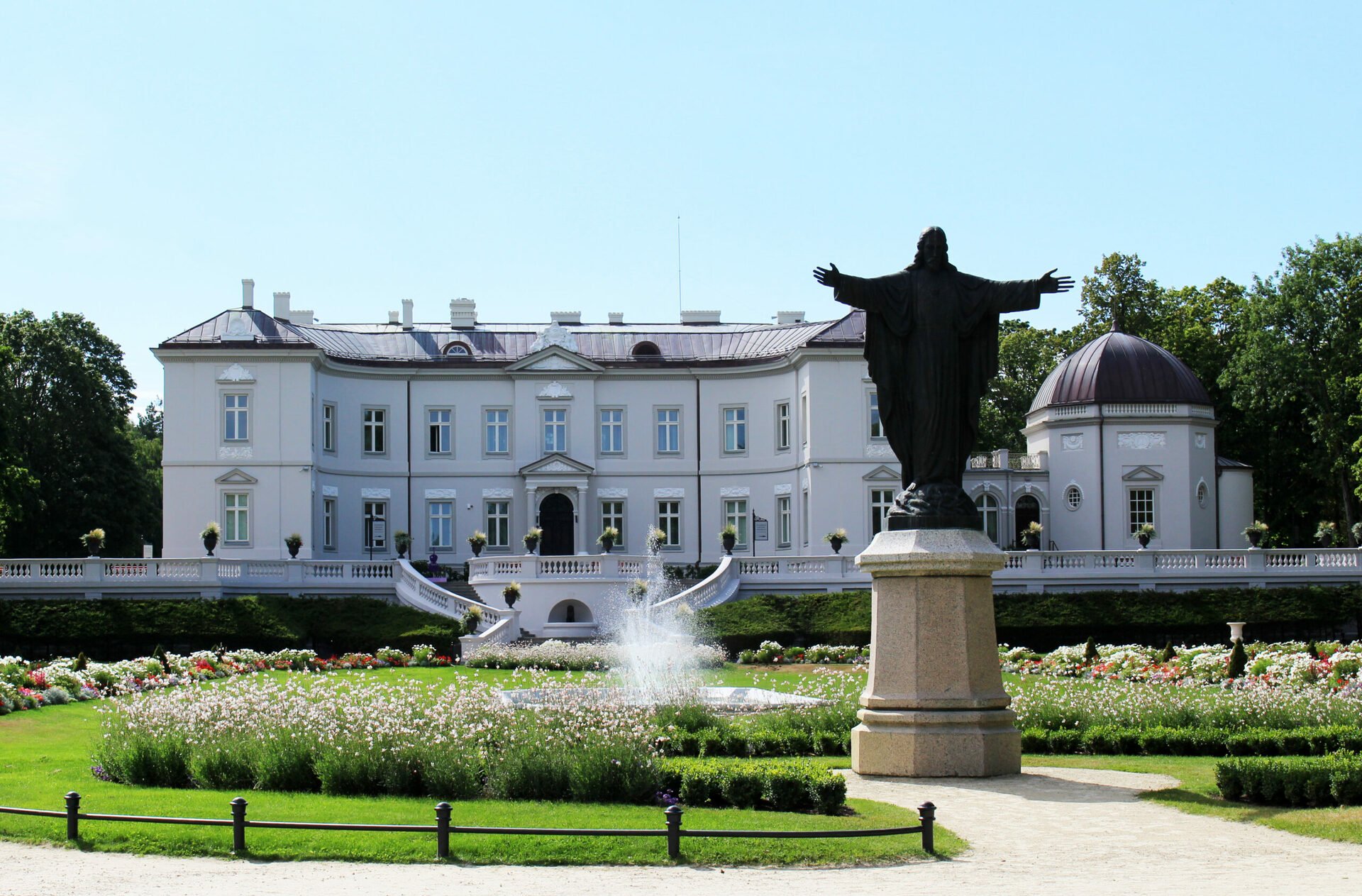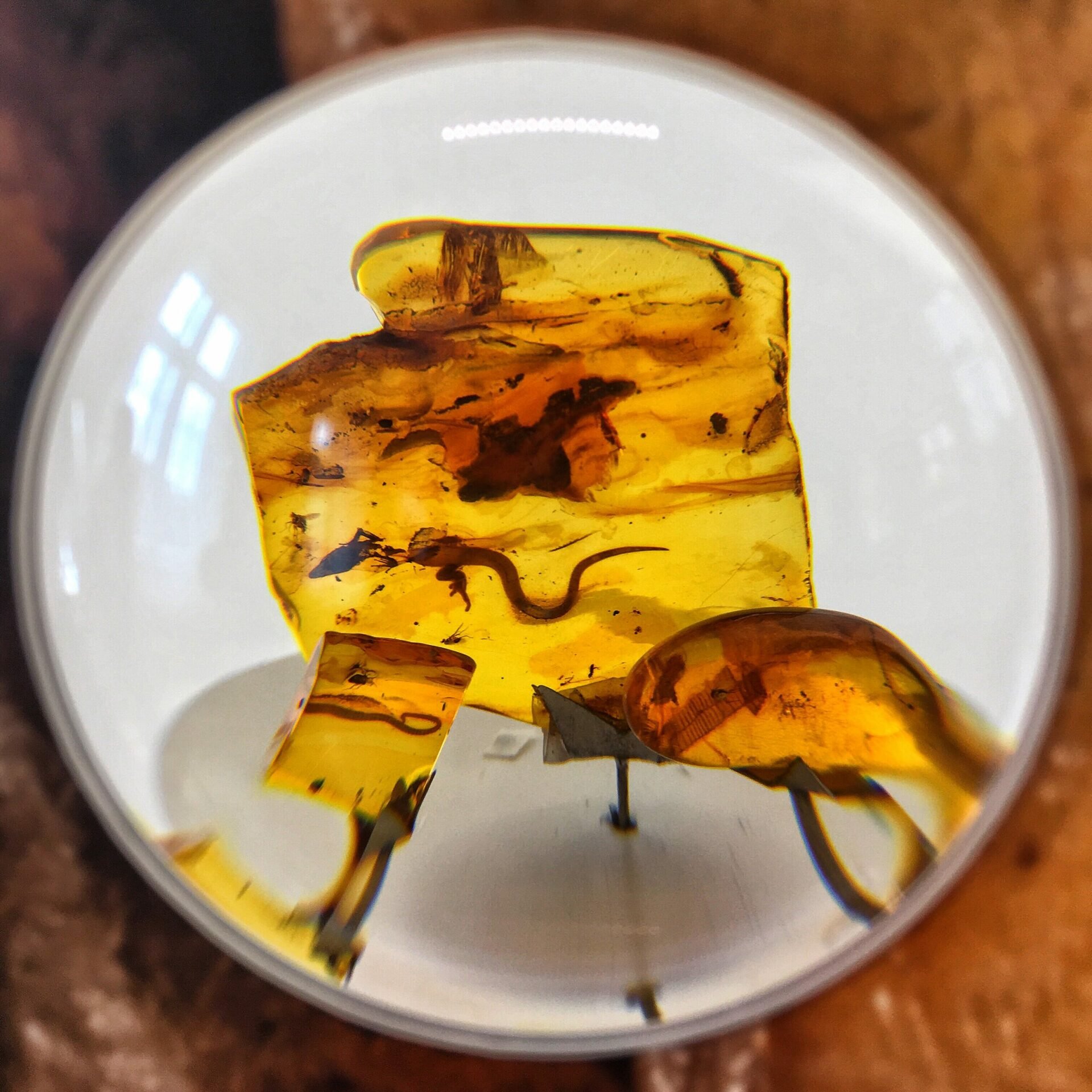Palanga is famous for its rich tourism and cultural sites, unique resort history and highly memorable objects of interest. Below is a list of just ten places to visit, which are not only famous but also culture-rich, carefully selected by the Palanga Tourism Information Centre.
Palanga Church of the Assumption of the Holy Virgin Mary and the Observation Tower
The Church of the Assumption of the Holy Virgin Mary was built over one hundred years ago (1897-1907), based on a project by a Swedish architect, yet still attracts the gaze of every passerby with its neo-gothic beauty and grandeur.

The church tower was appropriated for tourism, which included furnishing an observation point with an area of about 18 m2. Visitors can enjoy the panoramic view of the city and the sea, get a glimpse of the astoundingly large bells as well as their working mechanism. The observation area also features two monocular telescopes. Visitors are allowed inside on work days from 12 PM to 3 PM, and on the weekend – from 1 PM to 6 PM. Visiting the observation tower is free.
Vytauto g. 51, Palanga
The Sea Pier and J. Basanavičiaus Street
Today, one of the most popular places to go for entertainment and a walk – J. Basanavičiaus Street – in the 19th was known as Tiškevičiaus Boulevard. However, after Dr J. Basanavičius visited Palanga during the Interwar Period, it lead to the locals renaming the boulevard in honour of the Lithuanian patriarch.

J. Basanavičiaus Street is also known for its authentic villas, surviving the elements since their construction in the times of Counts Tiškevičiai. This is the main street, which leads towards the symbol of the Palanga resort – the Sea Pier. What is especially interesting about this seemingly ordinary pier is that parallel to the current J. Basanavičiaus street, railway tracks were laid all the way to the end of the pier; these were used to transport bricks from the Tiškevičiai brickyard to ships for transport. The street itself was not paved, dusty, difficult to walk on. For better comfort, tourists could use a “konke” – a horse-drawn tram on rails. From 1892 onwards, the Sea Pier became a popular spot for scenic walks. The current bridge, built in 1998, is 470 meters in length. Here, visitors can listen to the sounds of the sea, the caws of the seagulls, and in the evening, get comfortable on the benches and enjoy the sun settle into the sea.
In a nearby square, there is another sculpture famous for its associated love story, which has since become a symbol for the resort – “Jurate and Kastytis” (sculptor Nijole Gaigalaite).
J. Basanavičiaus g., Palanga
Counts Tiškevičiai Avenue and Palanga Kurhaus
This space embodies the spirit of the end of the 19th and the beginning of the 20th century. The avenue features two bronze sculptures – “Countess Antanina Sofija Loncka-Tiškevičienė” and “Count Feliksas Tiškevičius”. The two are connected by a strip of metal laid into the ground tiles with the Tiškevičiai family motto engraved in Latin and Lithuanian: “Deligas quem diligas” and “Išsirink, ką myli” (“Choose who you love”). Original retro-style streetlamps and paved floor make the avenue look truly striking. Another adornment of the avenue is along Kęstučio Street – wooden gates, lovingly carved and engraved, were reconstructed following a project from 1901.

Counts Tiškevičiai avenue is also home to the Kurhaus. Constructed around the year 1877, Count Tiškevičius sought to build a spacious restaurant as well as the first hotel in the resort town. The Kurhaus became a popular and beloved spot for tourists to meet up and spend time together. The restaurant was not the only attractive feature; it also had a reading room and a billiards and other games room and was a common place for cultural events such as plays and concerts. This is how the Kurhaus became the heart of the developing resort.
Grafų Tiškevičių al. 1, Palanga
Palanga Sculpture Park
Along the Vytauto and J. Simpsono Street intersection lies a sculpture park, which becomes a real attraction in the summer for those who enjoy spending quiet time with family or friends. 28 sculptures are situated in the park to the delight of its visitors, including gigantic outdoor chess pieces that the visitors can actually use to play a match.

For culture lovers, an alternative cultural-social space “I Love Palanga” is set up in the park during the summer season. Here, all sorts of cultural events are organized: concerts, film screenings, educational events, among others. All events are free.
Vytauto g. 39A, Palanga
Palanga Resort Museum
The villa “Anapilis” (“Afterlife”), which houses the museum, is one-of-a-kind, with architecture unique to not only Palanga, but the entire Lithuanian resort. Built at the end of the 19th century, the “Anapilis” villa belonged to the mother of Palanga count Feliksas Tiškevičius, Countess Sofija Tiškevičienė, which is why the villa was referred to as “Sofia” for a long time.

There were rumours in Palanga going about Sofija Tiškevičienė and her enjoyment of calling spirits, that the countess had a secret mirror room set up in the attic of the villa, which the spirits could not leave nor return to the spirit world. Locals would avoid the villa simply due to the sounds of the wind organ coming from inside. It was believed that countess Sofija Tiškevičienė had poor health, and whenever she felt worse, she would listen to the melody of the wind organ, which would help her calm down.
Various archeological, historical objects, numismatics, photographs are exhibited in the museum. It is also a venue for lectures, conferences, concerts, meetings with famous people, art exhibitions and films screenings.
Birutės al. 34A, Palanga, www.kurortomuziejus.lt
Birute Park
The pearl of Palanga and once considered one of the most beautiful parks in Northern Europe – Birute Park. It is tended to every year to make it even more attractive to visitors. The author of the project for the park was the famous French landscape designer, horticulturalist Édouard François André. The park was opened at the end of the 19th century at the request of Counts Tiškevičiai.

While walking through Birute Park, be sure to visit Birute Hill – the hill surrounded by legend – rising to 21 meters above sea level, from which a gorgeous view is opened into the roaring sea.
Traditionally, three times a week during the summer –Thursday, Friday and Saturday – at 18:30, fans of wind instruments all gather to the rotunda of Birute Park, where the professional orchestra of Palanga offers both locals and tourists free concerts surrounded by nature.
Vytauto g. 15, Palanga
Palanga Amber Museum

One of the most visited museums in Lithuania – the Amber Museum was established in 1963, in a neo-renaissance palace, which was built in 1897 in Birute Park. The historical palace interiors of the first floor bring back to the exuberant times of the Counts Sofija Tiškevičiai. The second floor hosts a unique exhibition of amber, introducing the origins of amber, trade routes, production, manufacture, archeological exhibits and a rare collection of amber inclusions. Visitors can also explore the gallery of amber morphology as well as one of the largest pieces of amber in the world – the “Sun Stone”.

{“total_effects_actions”:0,”total_draw_time”:0,”layers_used”:0,”effects_tried”:0,”total_draw_actions”:0,”total_editor_actions”:{“border”:0,”frame”:0,”mask”:0,”lensflare”:0,”clipart”:0,”text”:0,”square_fit”:0,”shape_mask”:0,”callout”:0},”effects_applied”:0,”uid”:”1A4E7002-2517-44C6-B907-0BFADC7F2664_1565681103097″,”width”:3024,”photos_added”:0,”total_effects_time”:0,”tools_used”:{“tilt_shift”:0,”resize”:0,”adjust”:0,”curves”:0,”motion”:0,”perspective”:0,”clone”:0,”crop”:0,”enhance”:0,”selection”:0,”free_crop”:0,”flip_rotate”:0,”shape_crop”:0,”stretch”:0},”origin”:”gallery”,”height”:3024,”subsource”:”done_button”,”total_editor_time”:18,”brushes_used”:0}
Vytauto g. 17, Palanga, www.ldm.lt/pgm
Palanga Fairytale Park
The Lithuanian Fairytale Park, attracting visitors not just with its cozy atmosphere, playful sculptures, but also non-traditional solutions – visitors can touch the fairytale compositions and listen to the associated fairytales in Lithuanian and in English. When creating the sculptures, the goal of the artists was to connect modern art with folk art dating back hundreds of years.

The Fairytale Park is in a beautiful location, not too far from Birute Park and the art and entertainment club “Kupeta” (“Stack”).
S. Daukanto g. 24A, Palanga
Sculpture “Fisherman’s Daughters”

In 1982, in the dunes along the gates of Šventoji port, a spectacular 4-meter tall sculpture-composition titled “Fisherman’s daughters” by Zuzana Pranaityte was unveiled. It portrays three long-haired girls gazing at the sea, waiting for their father to come back from a fishing trip.
Šventoji, Palanga City Municipality (in the dunes, near the gates of Šventoji port)
Monkey Bridge and Health Center “Energetikas” Sculpture Park “Stone Age”
The Monkey Bridge is a hanging, swinging bridge over the Šventoji river, which was built in 1973, but restored just recently, often called the symbol of Šventoji.

The sculpture park “Stone Age” is settled in the harmonious and open territory of the Health Center “Energetikas”. Priding itself in deep-rooted medical traditions, the unique space was created with the help both from the physicians of the centre as well as artists. The park has been the site of international stone sculptor symposiums every year since 2005 and attracts professional sculptors of varying ages from Lithuania, Austria, France and other EU countries as well as the USA, Russia and Belarus. The sculpture park “Stone Age” features 50 stone sculptures, demonstrating the mastership of the sculptors and showcasing ancient traditions in a modern context.
Not too far away from the sculpture park, heading into the dunes slightly north, visitors can find the Samogitian sanctuary – a holy pagan place with the paleo-astronomic observatory.
Kuršių takas 1, Šventoji, Palanga City Municipality
